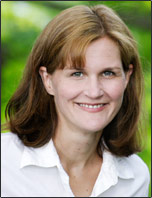
I’m sure you’ve heard that R creates beautiful graphics.
It’s true, and it doesn’t have to be hard to do so. Let’s start with a simple histogram using the hist() command, which is easy to use, but actually quite sophisticated.
First, we set up a vector of numbers and then we create a histogram.
B <- c(2, 4, 5, 7, 12, 14, 16)
hist(B)

That was easy, but you need more from your histogram. (more…)
 Let’s create a simple bar chart in R using the barplot() command, which is easy to use.
Let’s create a simple bar chart in R using the barplot() command, which is easy to use.
First, we set up a vector of numbers. Then we count them using the table() command, and then we plot them.
The table() command creates a simple table of counts of the elements in a data set.
H <- c(2,3,3,3,4,5,5,5,5,6)
Now we count the elements using the table() command, as follows: (more…)
 In Part 9, let’s look at sub-setting in R. I want to show you two approaches.
In Part 9, let’s look at sub-setting in R. I want to show you two approaches.
Let’s provide summary tables on the following data set of tourists from different nations, their gender and numbers of children. Copy and paste the following array into R. (more…)
 Let’s look at some basic commands in R.
Let’s look at some basic commands in R.
Set up the following vector by cutting and pasting from this document:
a <- c(3,-7,-3,-9,3,-1,2,-12, -14)
b <- c(3,7,-5, 1, 5,-6,-9,16, -8)
d <- c(1,2,3,4,5,6,7,8,9)
Now figure out what each of the following commands do. You should not need me to explain each command, but I will explain a few. (more…)
 In Part 7, let’s look at further plotting in R. Try entering the following three commands together (the semi-colon allows you to place several commands on the same line).
In Part 7, let’s look at further plotting in R. Try entering the following three commands together (the semi-colon allows you to place several commands on the same line).
Let’s take an example with two variables and enhance it.
X <- c(3, 4, 6, 6, 7, 8, 9, 12)
B1 <- c(4, 5, 6, 7, 17, 18, 19, 22)
B2 <- c(3, 5, 8, 10, 19, 21, 22, 26)
(more…)
Outliers. There are as many opinions on what to do about them as there are causes for them.
In this webinar, we’ll explore the different types of outliers, methods for figuring out which type you have, whether they’re influential, and what to do about them.
Note: This training is an exclusive benefit to members of the Statistically Speaking Membership Program and part of the Stat’s Amore Trainings Series. Each Stat’s Amore Training is approximately 90 minutes long.
About the Instructor

Karen Grace-Martin helps statistics practitioners gain an intuitive understanding of how statistics is applied to real data in research studies.
She has guided and trained researchers through their statistical analysis for over 15 years as a statistical consultant at Cornell University and through The Analysis Factor. She has master’s degrees in both applied statistics and social psychology and is an expert in SPSS and SAS.
Not a Member Yet?
It’s never too early to set yourself up for successful analysis with support and training from expert statisticians.
Just head over and sign up for Statistically Speaking.
You'll get access to this training webinar, 130+ other stats trainings, a pathway to work through the trainings that you need — plus the expert guidance you need to build statistical skill with live Q&A sessions and an ask-a-mentor forum.



